| |
“A glossy piece of pornography, pretentiously packaged and sold under the guise of a social document.” |
| |
Reviewer Chris Pahlow, Monthly Film Bulletin, April 1977 |
I beg to differ, Mr. Pahlow. The ‘guise’ is a relevant one. But I concede that you could easily interpret this as an exploitation film. It’s returned to a very different world today that may not be as tolerant of its 70’s attitudes but I felt it was dealing with a very difficult subject and it did so sensitively and earnestly. Whether the several sex scenes were vital to the story is up for debate. But they are there and each lasts a few minutes and what for? To further express the character of the participants or to simply titillate as off come the pants? On that subject, we get to choose from two versions, one with most female nipples carefully edited out and the other with said nipples to the fore. Even in the lesser censored version, there’s no lingering on nudity. Yes, a sex scene can last two minutes or so and there’s a thigh here and a breast there but it’s fleeting snatches (definitely no pun intended) and no full frontal shots. I’m with lead actress Sarah Douglas on the extended sexual activity. It’s simply unnecessary and does the serious drama some reputational damage. But the violence is realistic enough for this reviewer to be repelled by it (as we all should be) and in between violent episodes, there’s always that feeling of how far are we going to go next? Violence in movies tends to escalate. It’s genuinely tense throughout and Douglas as Diane, the primary victim, does a very convincing job of adding layers to a character that – as a victim – could be interpreted very one dimensionally. Of course, the question at the heart of any domestic violence debate is why do some women return to the scene of the crime? The answers are complex and after a little research, the following tend to be the frontrunners. Firstly, there’s unequal power in a relationship, then there’s profound manipulation whilst maintaining a successful façade of normalcy to outsiders, the hope that the abuse will simply stop and at number four, love. If you live in a society in which you can choose your partner, love must be horribly intertwined with subsequent domestic violence. The Ink Spots nailed it with ‘You Always Hurt The One You Love’…
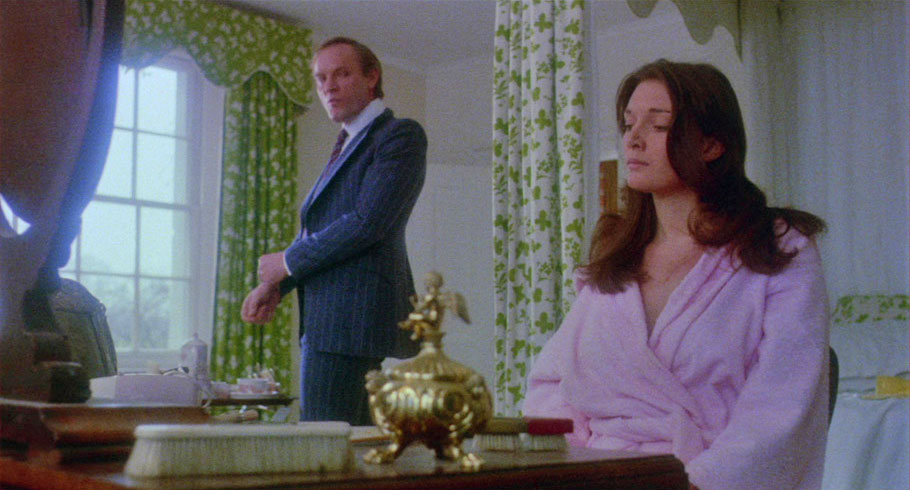
The Brute opens with a scene of shocking violence that I was utterly horrified by and it caught me completely off guard. Seeing a man beat a woman is always a hard watch but both Douglas (as Diane) and Julian Glover (as Teddy) sell this scene tremendously well. Diane flees to the relative safety of one of the two cars the couple owns. She makes her way back in the morning, battered and bruised, to find her brutish husband shaving as if everything was normal. They exchange heated words but he seems now to be in command of his rage and it stands as a grotesque but sated demon between them. She complains of bruises and marks and how they would impact her modelling sessions. Meanwhile I sat there screaming at her “GO!!! LEAVE!!! GET OUT!” At her photoshoot, we are introduced to her friend Carrie whose boyfriend Mark is the photographer. These two take Diane in after a second horrifying incident at her marital home. Throughout the film many subplots intersect. The brutal Ted is planning on securing custody of their only child and whisking him off to South Africa purely to heap emotional distress on his poor wife. We are introduced to another victim, whose husband is every bit as monstrous as Ted and how Diane tries to help her out of the inevitably crowded house for battered wives, at the time the only one of its kind. In the meantime, photographer Mark exhibits the kind of behaviour that really screams 70s and that in 2022, he’d be branded as an abuser too. The cliché of some women liking rough sex is wheeled out. I’m not saying it’s not true for some women but it’s become a cliché enabling more aggressive men to vent on their partners. So Diane is caught in this awful situation of being beaten by her husband, and having Mark force himself on her and then after she says “No,” many times, she acquiesces and seemingly joins in. This is always a difficult facet of behaviour which does fit in more with men’s fantasies and therefore can be taken as straight exploitation. In a sublime comic reverse of the pressing male and the unwilling female, there was a scene in the US sit-com Cheers when Sam finally has Rebecca in his arms. He kisses her. She says “Don’t…” He kisses her again. She says “Stop…” As Sam backs off, Rebecca says “I said ‘Don’t stop!’” I was tempted to say the film is on a real tightrope of intention, the abyss of exploitation to the right and to the left the drama of the social woes it’s uncovering. It’s what’s on the left that gives The Brute its considerable bite..
After I’d just finished watching the film I have to say I was hugely impressed by how shocking and effective it was. My jaw hit the floor twice in the first twenty minutes and I was also surprised just how good the first billed star of the show, Sarah Douglas, actually was. As The Brute was actually shot in 1975, she was a mere 23 year old, and she carries this film with a range and assuredness of someone with twice as much experience. She’s comfortable with nudity and simulated sex scenes (or at least acts really well at being comfortable) and at over six foot with a model’s looks, she’s tremendously striking, a personal opinion that flirts with grim irony as she is the one being relentlessly struck. In my mind, and I suspect the minds of men of my generation, she’s forever the super villain Ursa from the first two Superman movies starring Christopher Reeve and I have very fond memories of an interview she did for the superior ITV film programme Clapperboard aired in the 70s and 80s hosted by an affable Chris Kelly. I wore out the VHS tape I had it recorded on. You can still find the clip on Facebook.* She is relaxed, happy to distance herself from being a cartoon villain and at one point Kelly asks her how she got into the mindset of a super villain. She said, “If you wear… I don’t suppose you wear black, thigh-length leather boots.” Kelly, to his eternal credit, replies with “Not on Clapperboard, no.”
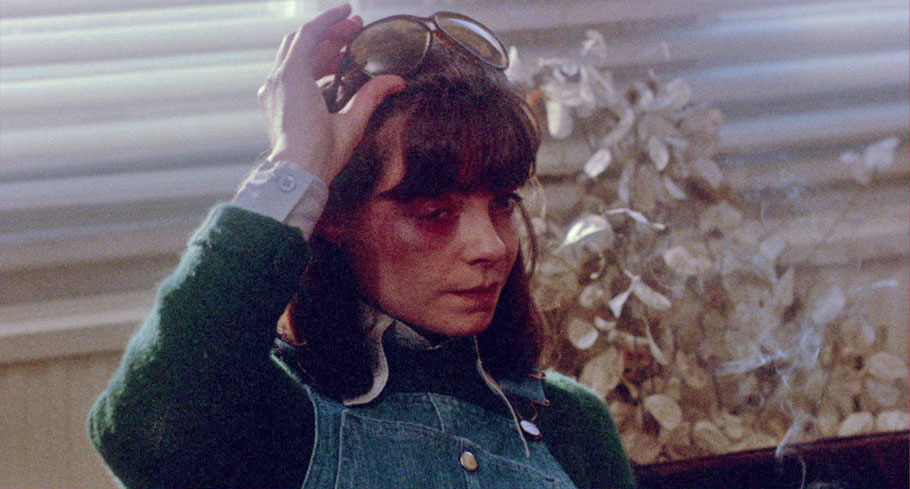
In the character of Diane, you have an independent woman who verbally gives as good as she gets and makes good money modelling so is not dependent on her monstrous husband for money. I think it’s hugely important to note that the violence is not sexual. He’s just a seething cauldron of brutish rage which ebbs enough for her to convince herself that things might be as they once were. I am male so suffer no delusions that I can put myself in an abused woman’s shoes. I was in a difficult relationship (we’ve all been there) but like Diane’s husband, my then partner refused to seek professional help so for about nine months, I saw a counsellor to find out how to deal with the elephant in the room that wasn’t mine. So I do sympathise with how frustrating it is to deal with someone with a major life affecting issue who will do nothing about it. Not to stray too far off topic but there is a very enlightening article out there about what men do not know about women written by Times columnist Caitlin Moran**. It’s titled ’12 Things About Being A Woman That Women Won’t tell You’ and it’s the most popular online Esquire magazine story ever. The reason I bring it up is that at Number Six is ‘Fear’ and reading that short paragraph made a great impression on me. I suddenly realised that half the people on Earth walk around being scared of the other half. It may be all born from the general mismatch of physical strength but it is real and men should understand this.
The Brute doesn’t give any explanation for Teddy’s outrageous violence. There is a scene in which Diane sees a psychiatrist who comes up with a number of possible reasons for his behaviour but unless he commits for treatment, the problem is never going to be solved. There are very effective moments that paint Teddy as a perfectly normal man. He’s kind to the cat, his son seems to love him and he’s too frightened or not brave enough to put a rabbit out of its misery having been attacked or run over. What follows indicates that not only is his wife braver and more capable than he is (could that be why he needs to beat her up, to control her?), it’s also a scene you would never get away with in a film today. As far as I could tell, a live rabbit made up to look bloodied, is then in a quick insert, decapitated by a shovel-wielding Diane. I did a double take. Did the production really chop a live rabbit’s head off to illustrate a character point? I am overtly sensitive to animal suffering and found this just plain horrific. Don’t get me wrong. It was the right thing to do in real life but I do not want to watch animals murdered for my entertainment. Narratively that shot was unnecessary anyway.
Not once in the commentary or in the booklet does anyone mention what actor Bruce Robinson is best known for. It’s as if it’s such an obvious and well known fact that he is namechecked by Kim Newman and we move on. I want to examine his character but I must mention what might be obvious. Robinson wrote and directed Withnail and I, one of the best British films of the 80s and a real favourite of ours here at Outsider. His character of Mark, the swinging photographer in the David Hemmings of Blow Up mould is painted as the nice guy in this film and the only thing he does that could be called redeeming is that he doesn’t beat women up. His girlfriend who seems to be resoundingly tolerant of this cheating asshole replies to his question of hitting women with “If you did I’d knock you right out.” “That’s exactly why I don’t do it,” he replies. Even that answer is revealing. It could be interpreted as “If I could get away with not being hurt, I might beat women up.” Mark is an opportunist and if there’s a beautiful women in a spare bedroom, an abused woman who’s hurt and vulnerable, then it’s perfectly OK to strip off next to her as she sleeps, join her in bed and then essentially force himself on her. That’s a tough watch. Did I mention he left his girlfriend asleep alone upstairs? What a class act Mark is.
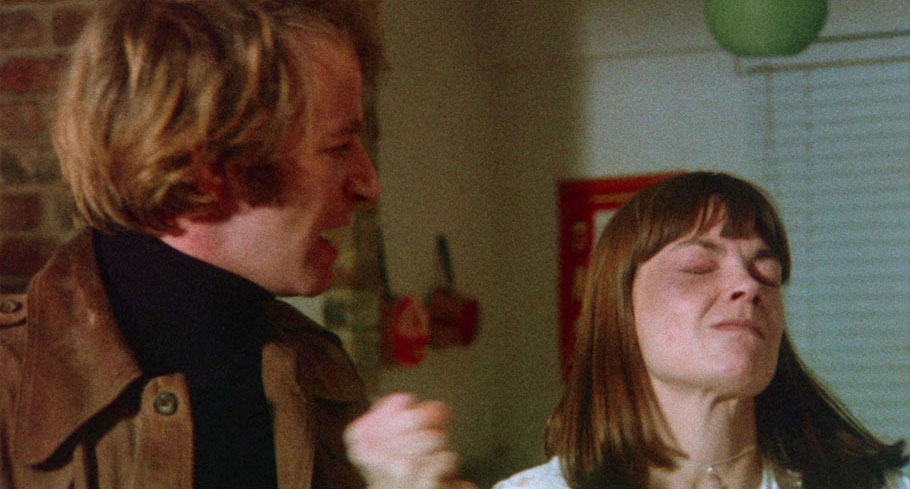
Just a few more notable aspects of the film before we get to the Extras. This was revered film editor Gerry Hambling’s last film before hooking up with director Alan Parker and enjoying a wonderful partnership that spanned fourteen films. As to be expected from such a talent, The Brute is very skillfully cut. I could have done without the rabbit decapitation though. An editorial decision that very rarely bears fruit is to speed action up. Every over the shoulder shot of Diane driving being chased by Teddy in his Aston Martin DB6 is sped up noticeably while the same framing with Teddy is shown at the right speed but he’s actually driving very fast. There are a few other speeded up shots that don’t quite work but it’s a minor quibble. In the scene of Diane and her young son in his boarding school, you see the actors’ breath as she says goodbye. I didn’t realise that boarding schools were so damnably cold. Nice to see actress Charlotte Cornwell making a fleeting appearance. The series Rock Follies had aired on ITV, a groundbreaking show with three female leads about an all-girl rock band, the Little Ladies. I can still remember the songs. She was joined by Rula Lenska and the extraordinary golden-voiced Julie Covington, she of the cropped hair cut. There’s an extremely swift herd of cows (you’ll know what I mean when you see it) and the cows’ farmer stops to ask the director if his herd’s performance was alright (mute of course). And finally there’s a typo in the end credits with Monty Python’s Carol Cleveland credited as Diana’s Agent instead of Diane’s.
The Brute, undercut a little by the length of its tame sex sequences, is a first rate drama about a difficult subject, brought to harrowing life by some terrific performances. Get it for the drama and there’s always the option of fast forwarding the fornication.
The Brute is presented in the 1.85:1 aspect ratio with thin letterboxing on standard 16:9 TVs. There are two versions of the film: the more explicit export cut (90 mins); and the uncensored UK version, under its pre-release title, The Brute Syndrome (89 mins). Each shows its celluloid origins with grain and some dust and sparkle but it has scrubbed up very nicely and any softness, lack of contrast or colour fidelity can all be put at the door of the limitations of the film stock and the shortcomings of a low budget. It looks very natural and very 70s.
The original mono audio is clear with very little hiss and every word (and landed blow) are perfectly mixed.
There are new and improved English subtitles for the deaf and hard-of-hearing.
Audio commentary with actor Sarah Douglas and writer and critic Kim Newman (2022)
I was most heartened to find Douglas as a participant as she’s in almost every scene and having her memories and her views on a film in which she is so vulnerable at a young age was something I really looked forward to. Kim Newman was a perfect host being knowledgeable, engaging and enthusiastic. I got the impression that his views on the film aligned with my own. So Douglas dives in to the nudity “…my left breast!” straight away. She seems to be extremely relaxed about the whole thing and that sense of comfort is passed on the listener. She knew her wrathful husband Julian Glover as they were under the same management. Involved in a lot of science fiction and fantasy, Douglas often runs into Glover at conventions. Glover of course played an Imperial Walker commander in The Empire Strikes Back, a Bond villain in For Your Eyes Only, Donovan in Indiana Jones and the Last Crusade, Grand Maester Pycelle in Game of Thrones and was the voice of the giant spider Aragog in Harry Potter and the Chamber of Secrets. My, did that man have his franchise villainy turned to 11! Douglas and Newman mention the beheading but no one seems too troubled about it. Time and again Douglas says she was disappointed in specifically the unneeded sex scenes, She laid the blame for that on the producers as she was sure the director’s intentions were focussed on the drama. She mentioned she might improve her own performance today but actors must always have that idea watching old work. Whenever we alight on a sex scene she’s quite happy to talk us through it. The hay barn scene reality is about as sexy as concrete. The children, all very good in the film, were easy to work with. And I agree with Newman when he mentions that none felt like they’d come out of drama school as all were very natural. More sex is greeted with “Disappointing. I mean who is all this for?” By admitting her enthusiasm for actor Jon Finch and then saying “I’ll say no more,” essentially tells us all we need to know. Douglas missed out on the Maud Adams role in Rollerball but apparently she’s in the party scene. I must check that. Just did. Couldn’t find her. So the general consensus from the film’s star is that she’s still proud of it but it disappoints her. Kim Newman calls it “Admirable and interesting!” which is good enough for Douglas. I loved this commentary. She has no airs, no pretence, is passionate about her work and just great fun to be with for 90 minutes.

Sticks and Stones (2022): director Gerry O’Hara recalls the film’s origins and incurring the wrath of the women’s liberation movement (13’ 22”)
“£45,000? I could get that tomorrow!” So said producer John Quested after hearing how much Gerry O’Hara had to play with on a previous feature. It seems he knew an abused woman and based his script on her experiences. He has nothing but lovely things to say about his leading lady. It seems that Julian Glover regretted doing the film despite how effective he was. O’Hara tells of the two women who ripped into him on the BBC’s flagship cinema review programme Film ’77 hosted by Barry Norman and how the host congratulated him for being so well prepared. Now there’s something I’d love to see.
UK theatrical prologue (1977): a ‘psychiatrist’ contextualises the film’s themes (48”)
As far as I can tell, this is the actor Kenneth Nelson who played the psychiatrist in the movie, setting up the film as if he were the real thing. He defines ‘cave man’ and simply introduces the idea that men can be monsters. I suppose this was included to undercut accusations of exploitation. Not sure it worked.
UK theatrical teaser trailer (53”)
With the title written in purple inside a graphic looking like a hamburger and bun, urgent music and a stern voice asks several questions. There’s no footage, just stills and garish pronouncements. I suppose it may have been effective as a teaser. I love how the ‘X’ Certificate was used as a marketing tool.
UK theatrical ‘X’ Certificate trailer (02’ 41”)
“What you are about to see is not a burglary. To some, it’s not even a crime…” That’s actually a good line and underlines how this sort of violence was never on a front page. Using the same hamburger bun and some lurid red soaked freeze frames interspersed with footage, it’s an exploitation trailer but then trailers have to stoop low even if the director’s intentions were admirable in highlighting a significant problem in society.
Image gallery: promotional and publicity material
Here we have 10 black and white production stills, then 5 more with their details on a note sellotaped to the back of them. Then there are 5 colour stills followed by 8 Front-of-House stills, an original press synopsis and press release, production notes, and Sarah Douglas’ biography. Then there’s the Goldcrest production papers, the cover showing the 2nd ‘brute’ and his victim while crediting the principal actors and a synopsis that features a still not from the film at all with two people not in the film either sitting in a café… Quite odd. Then there’s the Brent Walker video cover which is a lurid as you might imagine. There are notes in some of this paperwork that state explicitly that Teddy’s lovemaking becomes “strange and violent.” This simply is not true and it seems like the marketing was determined to get sex in with the violence when in the film it is not connected with sex at all. A second Video cover with the yellow artwork is followed by the yellow poster.
The Sea Can Kill (1976): Royal Navy short, written and directed by Gerry O’Hara, about surviving a disaster at sea (26’ 43”)
In an unwelcoming stormy sea, a group of men attempt to board survival rafts. Aside from the scene looking like it was shot in a tank (I swear the water appeared to be around three feet deep) this short informational film is actually quite lively and entertaining which is exactly what training films need to be for the info to stick. The man in charge is the recognisable though uncredited 70s jobbing actor, Julian Holloway.
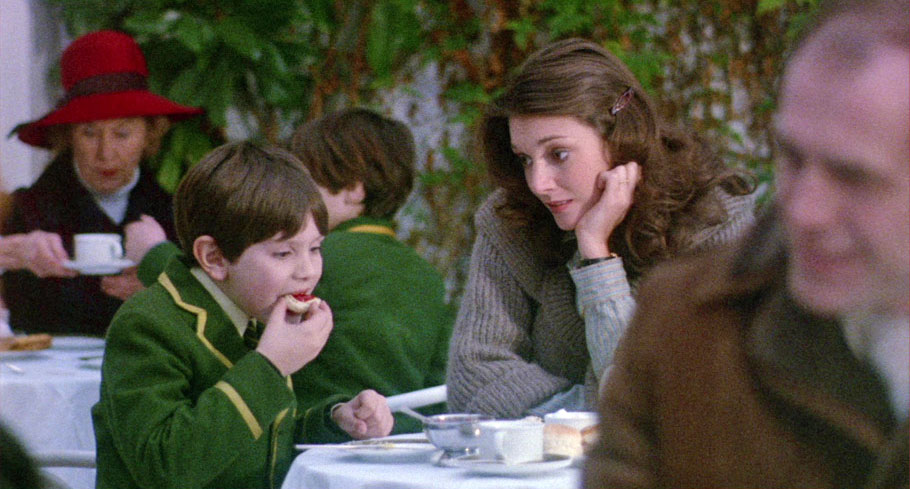
This Week in Britain: ‘Erin Pizzey’ (1978): interview with the inspirational founder of the world’s first refuge for women, produced by the Central Office of Information (04’ 48”)
This is what heroism looks like, a woman who recognised a problem and did something about it. What is striking about Erin Pizzey is what she has to say about the men who dish out the violence. She recognises that neither pills nor prison actually help the offender and as much as you want these terrible men punished for what they do, she sees it as a sickness, one that needs to be treated. I was very moved by her treatment of a man wanting his wife and child back. She didn’t let him in, gave him a cigarette, found out that he was abused as a child (as adult abusers tend to be) and ended up giving him a hug. I don’t know what the situation with both refuges for women and children and treatment for violent men is these days but I’d like to think that society followed Pizzey’s lead and is now well placed to deal with both. Erin Pizzey, I salute you.
Limited edition exclusive 36-page booklet with a new essay by Alexandra Heller-Nicholas and Josh Nelson, a look at the public response to the film’s controversial screenings, an interview with fight arranger Roberta Gibbs, an overview of contemporary critical responses, Anthony Nield on The Sea Can Kill, and film credits
Why The Brute Matters by Alexandra Heller-Nicholas and Josh Nelson is a terrific article outlining the class issues in the matter of spousal abuse and how the lone woman, Cassie, who physically fights back in the film’s first “Yes!” moment has further significance. Cassie is black and the strength of her character acts as a sort of beacon for the disempowered white women. It’s impeccably researched with loads of examples to view and look up and it gives the film a status which it deserves but is hardly ever acknowledged. Bravo, Alexandra and Josh.
The Brute in Newcastle covers the opening of the film after Hemdale took over the distribution duties. Three extracts from the Newcastle press at the time note the unwelcome coverage against the film singling out director O’Hara for criticism. It was regarded as an upmarket sex film with the issue of ‘wife-bashing’ a secondary concern and one nullified by the fact that working class abused wives were not represented. They sort of were despite the model and financially independent Diane being the lead.
Roberta Gibbs: Action Actress profiles one of the very few women who forged a career as a stunt woman (or ‘action actress’). As Maria in The Brute, I have been unable to recognise her in the film as an actress playing a part. That’s my failed effort not hers. Google has, for once, let me down. Gibbs’ main contribution to The Brute was to make the one woman vs. man fight (Carrie versus Alan) realistic and at that she does a terrific job. Without resorting to martial arts expertise and all the clichés of fight cinema at the time, she coordinates a fight that feels real and believable.
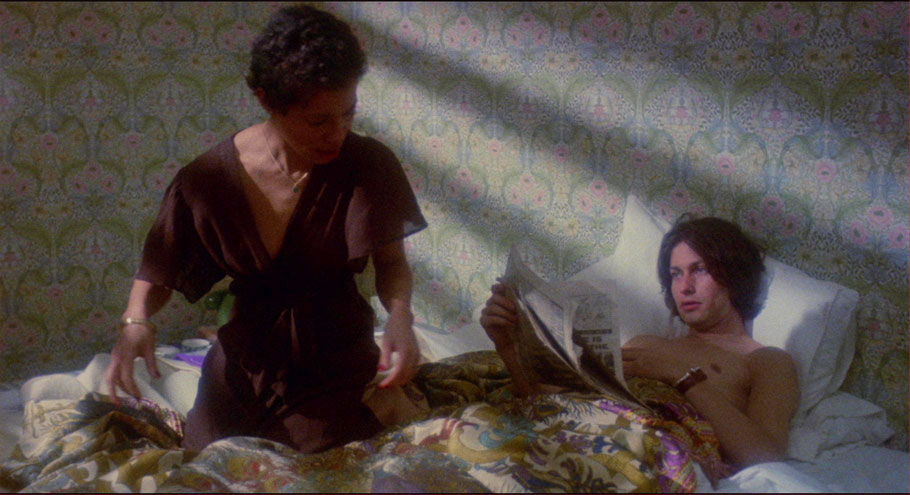
Critical Response starts with an extract from the BFI’s Monthly Film Bulletin review. As you might imagine from the quote at the top of this review, it’s not a great start. Colin Parlow is in fact Colin Pahlow according to my many decades old collection of Monthly Film Bulletins and a quick Google search. The New Statesman review is damning. It suggests that the heroine-victim should be “…kicked up the arse.” I mean, for Christ’s sake. You are whipped with a leather belt and repeatedly punched and in response to this attack you need to be further violently violated? What drugs were men of the past actually on?
Anthony Nield’s The Sea Can Kill includes information on where O’Hara’s short film was shot (a tank in Malta). While the tank’s waters may not be completely believable, the horizon is all too authentic. The tank set was built outdoors and lined up so that the real horizon could be photographed behind the tank. It’s one of the first examples of what we now call ‘infinity pools’.
Finally there are technical credits and a copy of one poster version shouting out “Do you hate him? Or do you love him?”
It’s perhaps relevant that of all the films I have reviewed since 2003, The Brute is the one of a small handful that does not have its own Wikipedia page. Hmmm. As a dramatic examination of a social problem that was never talked about, The Brute is a surprisingly effective film with marvellous and convincing performances from both the monsters and their victims. Its violence is intensely shocking and effective at repelling the audience. The soft core sexual interludes seem (ahem) inserted just to make the film more marketable. This is, however, forgivable because the film’s main themes are strong enough to withstand their intrusion. Highly recommended from this reviewer with a small caveat. The violence is pretty strong but if you’ve read this far, you are surely a cinema connoisseur so it’s well worth a look.
|